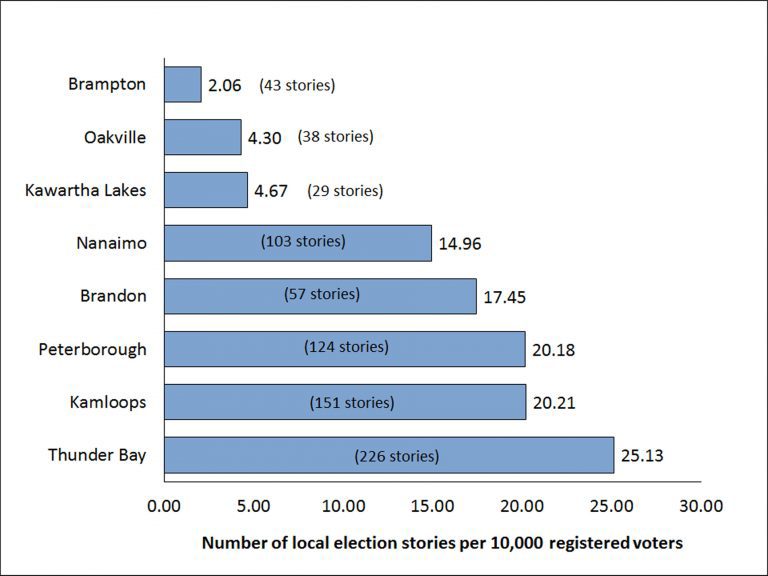By Jasmine Bala for the Ryerson Journalism Research Centre
The amount of news available about local contests for member of Parliament during the 2015 federal election depended on where in Canada voters were living, a new study by Ryerson University’s Local News Research Project suggests.
The research, which compared local coverage of the race for MP in eight communities in Ontario, Manitoba and British Columbia, was presented to the House of Commons Heritage Committee on Oct. 6.
“People who lived in a place like Kamloops enjoyed relative news affluence compared to, say, people who lived in a city like Brampton or a rural area like the City of Kawartha Lakes,” Ryerson School of Journalism associate professor April Lindgren told MPs on the committee.
Lindgren said that in the month prior to the election voters in the suburban community of Brampton, Ont., and the rural municipality of City of Kawartha Lakes, Ont. were among the least well-served in terms of access to news about candidates vying to represent them in Parliament.
The study examined local media coverage of the contest for MP in three of Brampton’s five ridings and identified a total of only 43 election-related stories, or two for every 10,000 registered voters. In the City of Kawartha Lakes, local news producers generated only 29 stories, or 4.7 per 10,000 registered voters.
Voters in Kamloops, B.C. and Thunder Bay, Ont., by comparison, were much better served. Local media in Kamloops produced 151 stories, or 20 per 10,000 registered voters, during the month leading up to the election. In Thunder Bay, there were 226 stories, or 25 per 10,000 registered voters.

